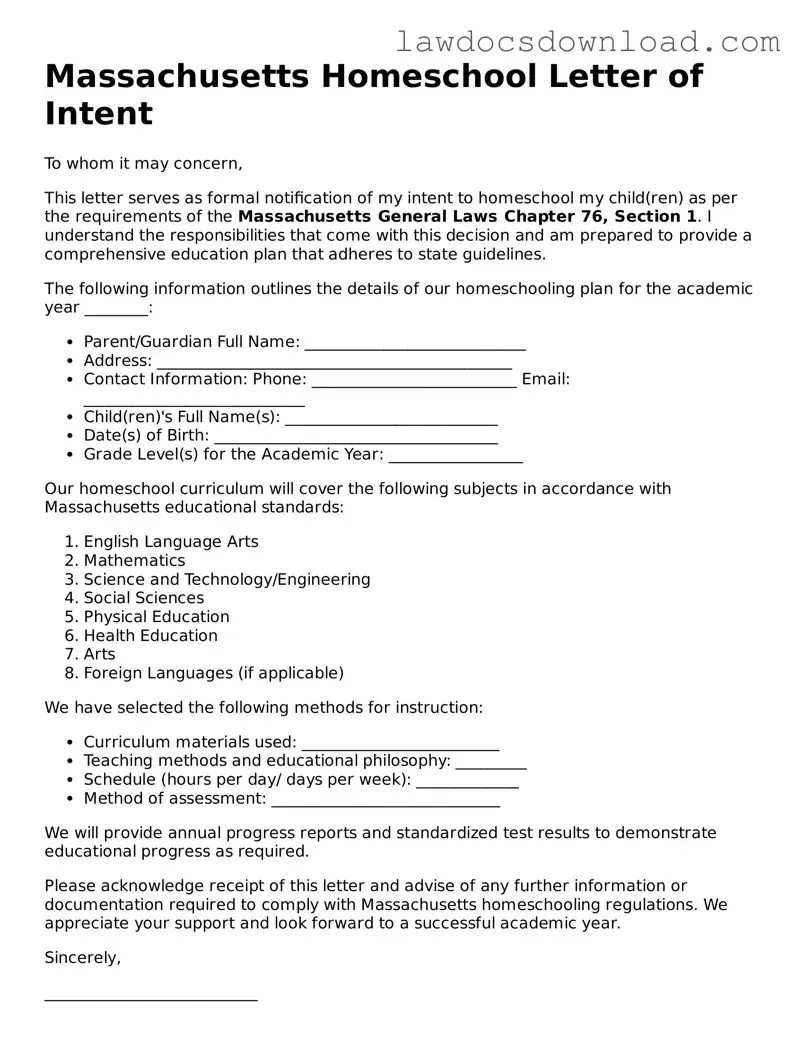When parents decide to homeschool their children, sending a Letter of Intent to homeschool to the local school district in Massachusetts is a critical first step. Unfortunately, it's also a step where mistakes happen. One common error is not providing detailed educational plans, including the curriculum and educational goals. This oversight can lead to unnecessary back-and-forths with the school district, as they seek to understand the homeschooling intentions more clearly.
Another frequent mistake is the omission of specific information about the assessment methods to be used. In Massachusetts, parents are encouraged to describe how they will evaluate their child's progress. This can be through standardized testing, a portfolio review, or other methods. Not clearly stating this in the Letter of Intent can result in requests for further clarification, delaying the homeschooling process.
Incorrectly addressing the Letter of Intent is another error that can lead to delays. It should be directed to the superintendent of the local school district, but sometimes parents send it to the wrong office or individual. This not only causes delays but also confusion within the school district's administration.
Parents often overlook the need to update the Letter of Intent annually. Each year, they must submit a new letter to continue homeschooling legally. Failing to do this can result in compliance issues and potentially truancy charges. Ensuring that a new letter is sent at the start of each academic year is crucial for a smooth homeschooling experience.
Not including a child's grade level is a common mistake made by parents when filling out the form. The school district needs this information to record the child's educational progress appropriately. Omitting it can lead to incorrect assumptions about the child's educational needs and achievements.
Another mistake lies in the failure to mention extracurricular activities or special education services if needed. Some homeschooled students may still participate in certain school district activities or require specialized support. Not mentioning these needs can prevent children from accessing available resources and support.
Assuming that once the Letter of Intent is sent, no further communication with the school district is required, is a misconception. School districts may have questions or require additional information. Ignoring follow-up correspondence can jeopardize the homeschooling setup. It's essential to stay in contact and respond promptly to any requests from the district.
Finally, some parents forget to keep a copy of the Letter of Intent for their records. This document is important should there be any disputes or misunderstandings in the future. Having a copy can simplify resolving any issues that arise.
In summary, while the process of submitting a Letter of Intent to homeschool in Massachusetts may seem straightforward, paying attention to these common mistakes can make the difference between a smooth start to homeschooling and unnecessary complications. Being thorough, keeping good records, and maintaining open lines of communication with the local school district can help ensure a successful homeschooling experience.
